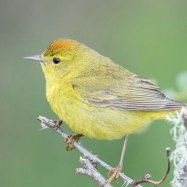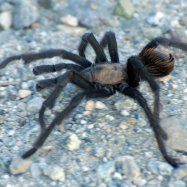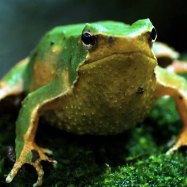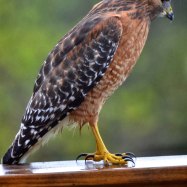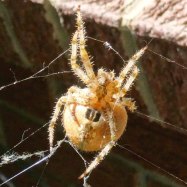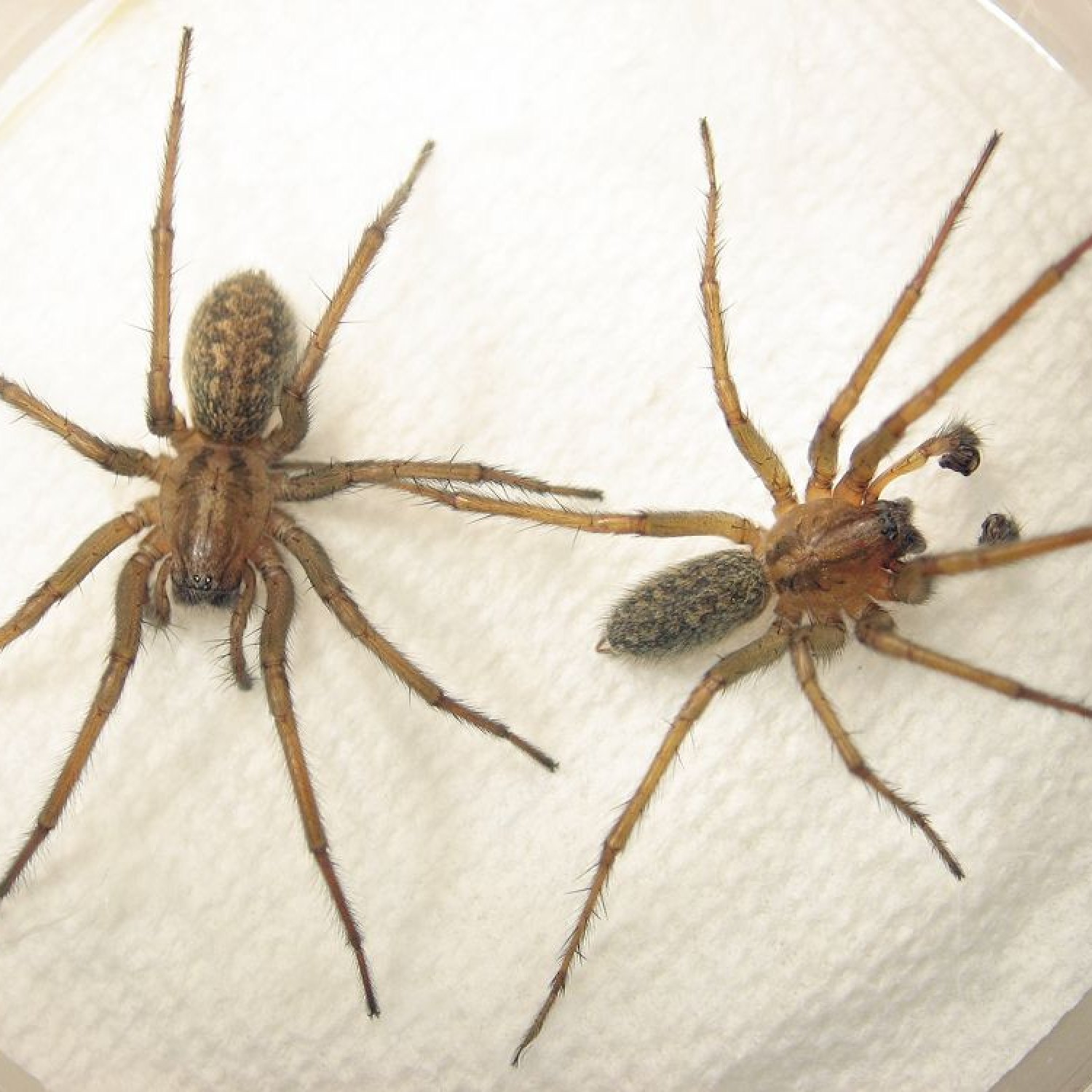
Hobo Spider
10-18 mm
The Hobo Spider, also known as the aggressive house spider, is a medium-sized spider found primarily in the Pacific Northwest region of the United States. Ranging in length from 10-18 mm, this spider is a member of the Agelenidae family and is known for its aggressive behavior. It is important to be cautious around this spider as its venom can cause skin irritation in some individuals.
Animal Details Summary:
Common Name: Hobo Spider
Kingdom: Animalia
Habitat: Urban and rural areas
Hobo Spiders: Fascinating Urban Arachnids
When most people think of spiders, they imagine them lurking in dark, isolated corners, ready to pounce on unsuspecting victims. But there's a spider that breaks that stereotype – the hobo spider. This medium-sized, brown arachnid is not only found in urban and rural areas, but it's also a cunning predator, with a wide geographical distribution.Eratigena agrestis, commonly known as the hobo spider, belongs to the animal kingdom, phylum Arthropoda, and class Arachnida Hobo Spider. It's a member of the order Araneae and the family Agelenidae. These spiders are mainly found in the Pacific Northwest region of the United States, but they are also found in Europe. In this article, we'll delve into the remarkable characteristics of the hobo spider and learn more about this fascinating arachnid.
Appearance and Habitat
Hobo spiders are known for their distinctive brown coloration, which ranges from light to dark shades. They have pale markings on their abdomen, which can vary in shape and size. These markings can be in the form of chevrons, dots, stripes, or even a lace pattern. The legs of the hobo spider are long and slender, measuring between 10 to 18 mm in length. Its body is medium-sized, with a length of about 10 to 15 mm. A hobo spider's body shape is similar to that of most spiders, with eight legs and two body segments – the cephalothorax and the abdomen Hamster. It also has eight small eyes arranged in two rows.As their name suggests, hobo spiders are found in urban and rural areas, including gardens, homes, and even on cars. They prefer humid environments, such as basements and crawl spaces, and can also be found in woodpiles, under rocks, and in tree bark. Hobo spiders are active mostly at night, and they hibernate during the colder months. They have been known to live for up to three years, which is a relatively long lifespan for a spider.
Feeding and Hunting Techniques
Hobo spiders are carnivorous and feed on insects, other spiders, and small arthropods. They use their venom to paralyze their prey before consuming it. These spiders have fangs that are long and smooth, making them well-suited for puncturing the exoskeleton of their prey. Once the victim is paralyzed, the hobo spider wraps it in silk and injects digestive enzymes to break it down. It then sucks the liquefied tissues of its prey.The hunting techniques of hobo spiders are quite fascinating. They use a combination of both stealth and swift movements to catch their prey. They hide in dark corners and behind objects, waiting for their prey to come to them. Once the prey is in striking distance, the spider attacks quickly, using its lightning-fast reflexes to subdue the victim. Despite their speed and agility, hobo spiders are not aggressive towards humans and only bite when provoked or threatened.
Geographical Distribution and Country of Origin
Hobo spiders are originally from the Northwestern United States and Europe. In the US, they can be found in states like Washington, Oregon, Idaho, and Montana. In Europe, they are mostly found in countries like Switzerland, Russia, and France. However, due to their hitchhiking abilities, they have now spread to other areas of the world, such as Canada and Norway.The spread of hobo spiders has been linked to human activities, such as transportation and relocation. They are known to attach themselves to objects like firewood, boxes, and even cars, unknowingly hitchhiking to new locations. This is why they are commonly found in urban areas where human activity is high. While they have been able to establish themselves in new environments, hobo spiders have not caused any significant ecological impact.
The Myth of the "Aggressive" Hobo Spider
Hobo spiders have earned a notorious reputation as being "aggressive" and causing severe bites to humans. However, there is little scientific evidence to support this claim. In fact, recent studies have shown that hobo spider bites are not as dangerous as previously believed.Studies have found that hobo spider bites result in temporary, localized pain and swelling, similar to a bee sting. In severe cases, a blister or ulcer may form at the site of the bite. These reactions are mainly due to the spider's venom containing cytotoxins, which destroy skin cells. However, there is no evidence that hobo spider venom is life-threatening or causes systemic reactions in humans. In contrast, the brown recluse spider, often misidentified as a hobo spider, has been known to cause more severe bites.
The Role of Hobo Spiders in Natural Pest Control
Despite their reputation, hobo spiders play a vital role in natural pest control. They are efficient predators and help keep insect populations in check. For example, they are known to feed on common household pests like cockroaches and silverfish. This makes them beneficial to have around the house, as long as they are not disturbed or provoked.Experts also believe that the presence of hobo spiders can actually prevent other, more dangerous spiders from establishing themselves in an area. This is because hobo spiders are territorial and will drive away any potential competitors in their habitat. So, next time you spot a hobo spider in your home, remember that they are actually doing their part in keeping your living space pest-free.
The Future of Hobo Spiders
The hobo spider's ability to adapt and thrive in urban environments has enabled them to spread to new areas. However, their increasing population and potential health risks have led to concerns about their presence in homes and gardens. This has resulted in the implementation of control measures, such as using chemical pesticides, which can also harm other beneficial insects in the environment.To combat this issue, experts recommend using natural and non-toxic methods of controlling hobo spiders. This includes regular cleaning and reducing clutter, sealing any cracks or gaps in the home, and keeping the area free of debris. Also, it's essential to remember that hobo spiders play an important role in natural pest control, and their presence should not be seen as a threat.
In Conclusion
Hobo spiders may seem like the villains in the spider world, with their aggressive reputation and rather intimidating appearance. However, a closer look reveals a unique and intricate creature that plays a significant role in keeping our environment in balance. With their widespread distribution, striking coloration, and innovative hunting techniques, hobo spiders are undoubtedly fascinating arachnids worth learning more about. So, the next time you spot one, take a moment to appreciate their incredible abilities and the valuable role they play in our ecosystem.

Hobo Spider
Animal Details Hobo Spider - Scientific Name: Eratigena agrestis
- Category: Animals H
- Scientific Name: Eratigena agrestis
- Common Name: Hobo Spider
- Kingdom: Animalia
- Phylum: Arthropoda
- Class: Arachnida
- Order: Araneae
- Family: Agelenidae
- Habitat: Urban and rural areas
- Feeding Method: Carnivorous
- Geographical Distribution: Northwestern United States and Europe
- Country of Origin: United States and Europe
- Location: Mainly found in the Pacific Northwest region of the United States
- Animal Coloration: Brown
- Body Shape: Medium-sized
- Length: 10-18 mm
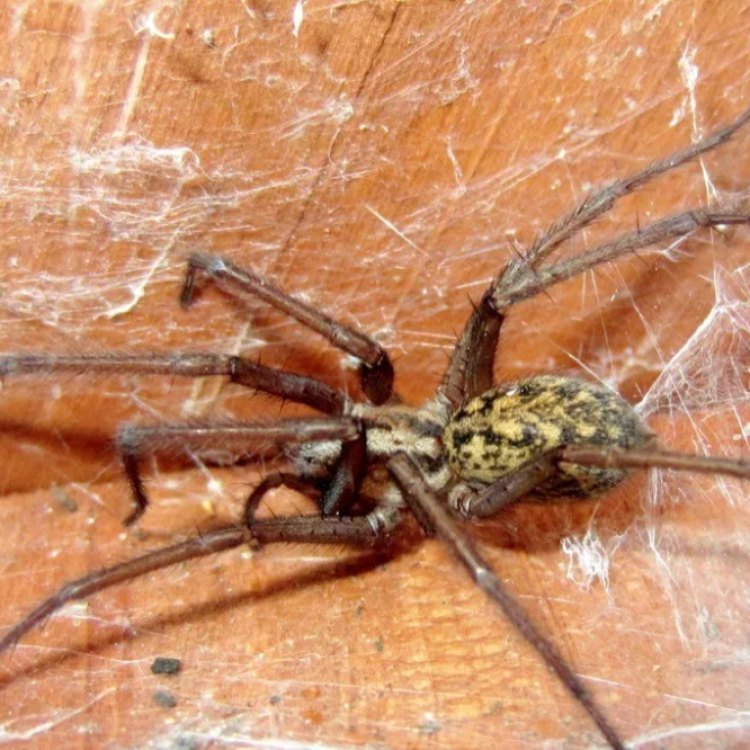
Hobo Spider
- Adult Size: 10-18 mm
- Average Lifespan: 1-3 years
- Reproduction: Sexual
- Reproductive Behavior: Males perform courtship rituals and mate with females
- Sound or Call: No sound production
- Migration Pattern: Non-migratory
- Social Groups: Solitary
- Behavior: Aggressive when threatened
- Threats: Habitat destruction, pesticides
- Conservation Status: Not listed
- Impact on Ecosystem: Plays a role in controlling insect populations
- Human Use: Not used by humans
- Distinctive Features: Striped legs and funnel-shaped web
- Interesting Facts: Hobo spiders are often confused with the brown recluse spider
- Predator: Various arthropods and insects
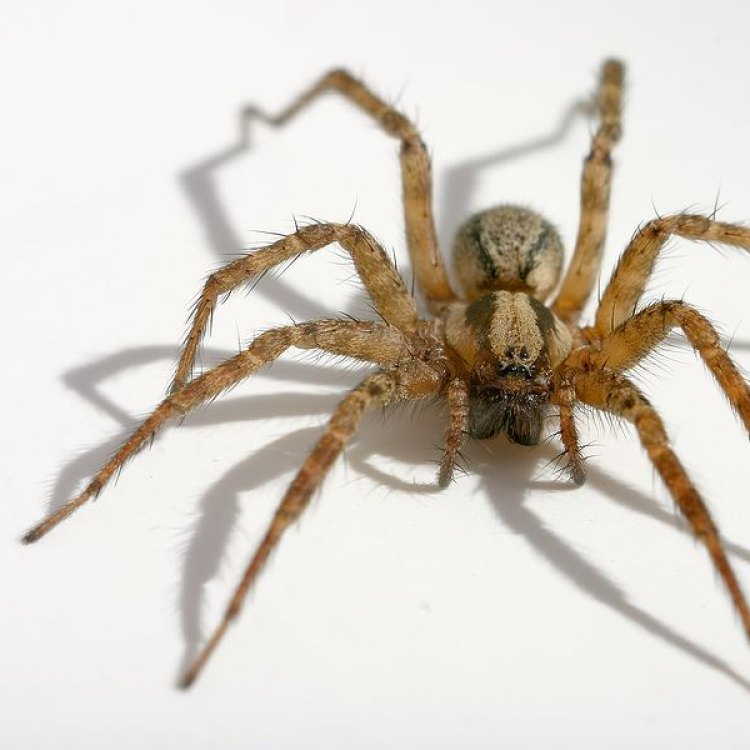
Eratigena agrestis
The Fascinating World of the Hobo Spider
When you hear the word "spider," what comes to mind? Do you imagine a tiny creature weaving a delicate web, or a venomous predator lurking in the shadows? There are over 45,000 known species of spiders in the world, each with its unique characteristics and behaviors. One such species is the hobo spider, a misunderstood arachnid that has sparked controversy and fear for decades. In this article, we will delve into the world of the hobo spider, uncovering its distinct features, behaviors, and contributions to the ecosystem.The hobo spider, also known by its scientific name Eratigena agrestis, is a member of the funnel web spider family PeaceOfAnimals.Com. They get their name from their tendency to hitch rides on trains and misplace themselves in new environments, hence the term "hobo." Native to Europe, hobo spiders were first observed in North America in the 1930s and have since spread across the continent. Although they have a notorious reputation, hobo spiders are an integral part of our ecosystem, playing a vital role in controlling insect populations.
The Basics: Size and Lifespan
Hobo spiders are medium-sized spiders, with a body length ranging from 10-18 millimeters (0.39-0.71 inches) and a leg span of up to 60 millimeters (2.36 inches). The females are typically larger than the males, as is the case with most spider species. They have a dark brown or reddish-brown color with striped legs, making them easily distinguishable from other spiders Haddock.In terms of lifespan, hobo spiders typically live for 1 to 3 years. However, their lifespan can vary depending on factors such as temperature, food availability, and habitat conditions. In captivity, hobo spiders can live up to 5 years. Like most spiders, hobo spiders undergo molting to grow and shed their exoskeletons several times throughout their lifetime.
Reproduction and Mating Habits
Hobo spiders have a unique reproductive behavior that sets them apart from other spider species. Males perform courtship rituals to attract females and mate with them. These rituals can involve vibrating their bodies and tapping on the female's web to announce their presence. If the female is receptive, the male will deposit his sperm on a web and guide the female to it with his pedipalps (specialized appendages for reproduction). The male then inserts his pedipalps into the female's genital opening, transferring the sperm for fertilization.Interestingly, hobo spiders can store the sperm in their bodies for up to a year and fertilize multiple egg sacs during that period. The female will then create an egg sac, which she guards until the spiderlings hatch. The spiderlings will remain on the mother's web for a few days before dispersing to build their webs and hunt on their own.
Behavior: Solitary and Aggressive
Hobo spiders are solitary creatures and prefer to build their webs in quiet, secluded areas. They are non-migratory and remain in their webs throughout their entire lifespan, only leaving to hunt or mate. However, despite their solitary nature, hobo spiders have been observed living in close proximity to other spiders, such as barn funnel weavers, without aggressive behavior.When threatened, hobo spiders can exhibit aggressive behavior, which is why they are often feared by humans. They will raise their front legs, exposing their fangs, and may bite if provoked or handled. However, their venom is not strong enough to cause significant harm to humans and is primarily used to subdue their prey.
Threats and Conservation Status
Hobo spiders face several threats in the wild, primarily due to human activities. Habitat destruction, caused by urbanization and agriculture, is a significant threat to their survival. Pesticides, used to control insect populations in agricultural areas, also have detrimental effects on hobo spiders and other arthropods.Despite these threats, hobo spiders are not currently listed as endangered or critically endangered. However, their populations have declined in some areas, and they are considered vulnerable in parts of their native range in Europe.
The Invaluable Role of Hobo Spiders in the Ecosystem
While hobo spiders may not be as charismatic as other animals, they play a crucial role in maintaining the balance of our ecosystem. They are considered to be valuable pest controllers, as their diet primarily consists of insects and other arthropods. In particular, they prey on crop pests, making them an essential part of sustainable agriculture.Additionally, hobo spiders serve as a food source for various predators, such as birds, reptiles, and other insects. This further highlights their significance in the food chain and their impact on maintaining a healthy ecosystem.
Interesting Facts and Misconceptions
One interesting fact about hobo spiders is that they are often mistaken for the more infamous brown recluse spider. This misidentification has caused many misconceptions and fears about hobo spiders, leading to their unjustified persecution. While both spider species share similar habitat preferences and appearance, there are distinct differences between them. For example, hobo spiders have a striped pattern on their legs, while brown recluses have solid-colored legs. Furthermore, hobo spiders do not have the violin-shaped marking on their bodies like brown recluses.Another interesting fact about hobo spiders is that they do not produce any sound or call. Unlike many other spiders that use vibrations to communicate or attract mates, hobo spiders remain silent.
Conclusion
In conclusion, the hobo spider is a fascinating arachnid, with distinctive features and behaviors. As with any animal, it is crucial to understand them before making judgments or taking action. While hobo spiders can be aggressive when threatened, they are an essential part of our ecosystem, helping to control insect populations and serving as food for various predators. As we continue to learn more about this misunderstood species, it is essential to promote their conservation and coexistence with humans.
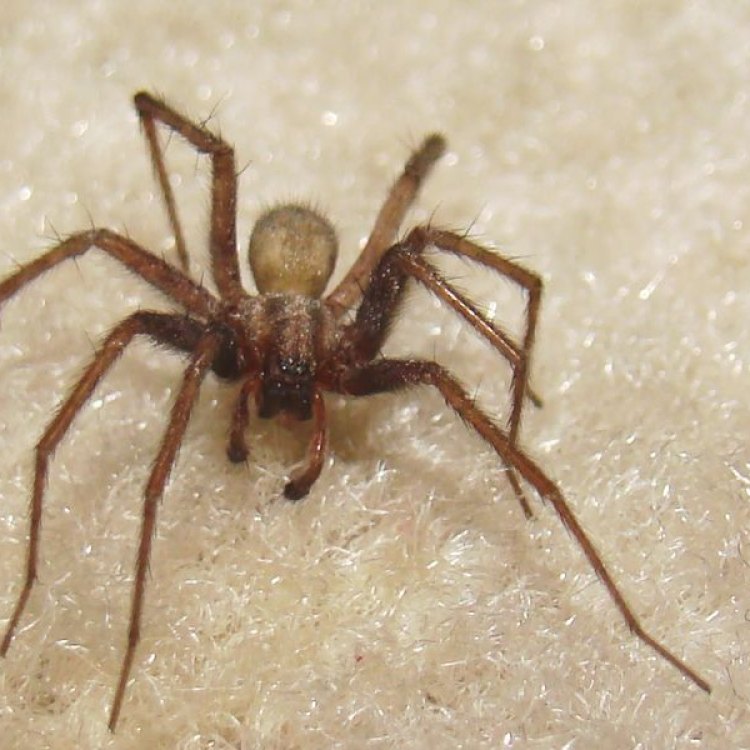
Hobo Spiders: Fascinating Urban Arachnids
Disclaimer: The content provided is for informational purposes only. We cannot guarantee the accuracy of the information on this page 100%. All information provided here may change without prior notice.

